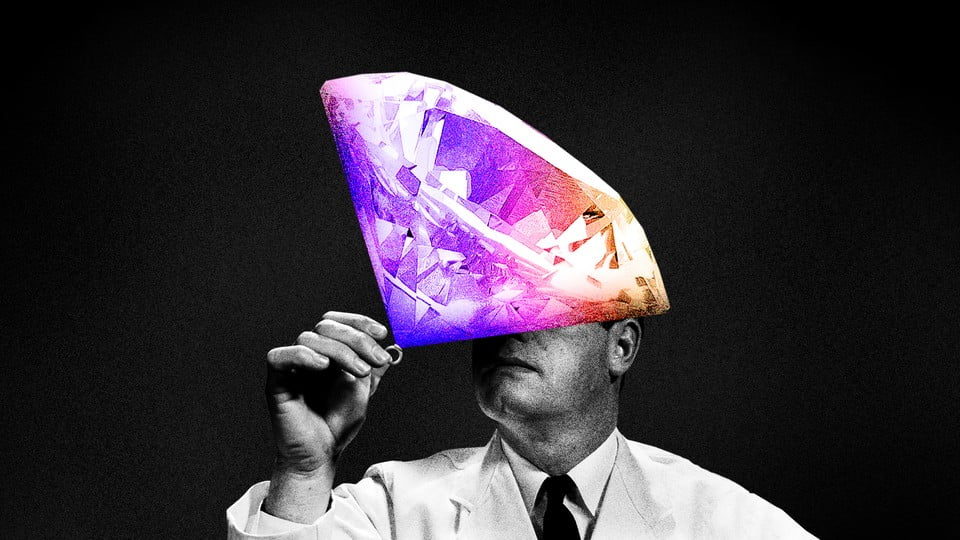As the allure of lab-grown diamonds rises, they find themselves in the midst of a unique societal conundrum. Although they possess the same chemical structure as their naturally-derived counterparts and are significantly cheaper to produce and purchase, they are met with resistance from a society that venerated mined diamonds as eminent status symbols for many generations. The article named “The Cultural Resistance and Appeal of Lab-Grown Diamonds in the Traditional Diamond Industry” primarily explores this complex relationship, elucidating the increasing demand, marked by a massive reduction in wholesale prices, and yet a certain hesitance from patrons, particularly in the context of engagement rings, largely attributed to the historic prestige associated with mined diamonds. The cultural value of diamonds, hence, surpasses their physical properties, posing a unique challenge to the lab-grown diamond industry.

The Threat of Lab-Grown Diamonds to Traditional Diamond Industry
The traditional diamond industry is considered to be under threat from the burgeoning presence of lab-grown diamonds. These synthetic diamonds, created under controlled conditions in laboratories, are becoming increasingly popular due to their accessibility and eco-friendly production process. However, while they serve as a fair competitor in the diamond industry, many traditionalists view them as a significant threat to the time-established position of mined diamonds in the global market.
Perception of Threat in the Traditional Diamond Industry
Traditional diamond industry players are perceiving an escalating threat due to the rapid upsurge of lab-grown diamonds. The primary concern for the conventional industry rests in the belief that lab-grown diamonds may cause a substantial market shift, potentially leading to a weakening in the value and demand for naturally derived diamonds.
Checkpoint in the Diamond’s Value: Mined vs Lab-grown
The value of a diamond extends far beyond its lustrous physical properties. Both mined and lab-grown diamonds exhibit these physical features, however, the societal symbolism and status associated with mined diamonds poses a challenge for lab-grown diamonds. Consequently, the perception of lab-grown diamonds is slowly changing, with consumers becoming more open to the idea, but there’s still a long way to go before they can match mined diamonds’ prestige.
Cultural Resistance to Lab-Grown Diamonds
Status Symbol Concerns With Lab-Grown Diamonds
Despite their identical physical and chemical structure to mined diamonds, lab-grown diamonds face substantial cultural resistance. This is because mined diamonds have historically been seen as a status symbol for generations. The diamond itself serves not merely as an object of adornment but also as a representation of wealth, power, and prestige.
Less Excitement for Lower-Priced Lab-Grown Diamond Engagement Rings
Diamond engagement rings have long been signifiers of love and commitment. While the price point seems alluring to some, a section of buyers might feel less thrilled about receiving a lower-priced, lab-grown diamond. For them, the enchantment associated with an expensive mined diamond may outweigh the practical appeal of lab-grown alternatives.
The Dilemma: Affordable but Less Prestigious
Herein lies the dilemma with lab-grown diamonds: they are significantly more affordable than their mined counterparts, but they lack the prestige traditionally associated with mined diamonds. As a result, these synthetic diamonds, despite having the same physical beauty and structure, are seen as less desirable to certain demographics.
The Appeal of Lab-Grown Diamonds
Affordability of Lab-Grown Diamonds
One of the main draws of lab-grown diamonds is their affordability. The production cost for a one-carat lab-grown diamond is significantly less than that of a mined diamond. This cost-effectiveness is passed on to the consumer, making lab-grown diamonds a more budget-friendly choice.
Identical Chemical Structure to Mined Diamonds
Adding to their allure, lab-grown diamonds possess a chemical structure that is identical to mined diamonds. This means they exhibit the same hardness, brilliance, and fire—a key selling point for many consumers won over by these virtually indistinguishable alternatives.
Increasing Buyer Preference for Plausible Lab-Grown Diamonds
Interestingly, some lab-grown diamond buyers select stones that would seem plausible for their income level if they were naturally-derived. This preference raises intriguing questions about perceptions of authenticity, value, and consumer choice.
Production Cost Differences: Lab-Grown vs Mined Diamonds
Significant Cost Reduction in Producing Lab-Grown Diamonds
Increasing demand for synthetic diamonds can also be attributed to the reduced cost of production. It costs between $15 to $20 to produce a one carat lab-grown diamond, a fraction of the $50 to $1,000 needed to mine a similar-sized diamond.
Price Comparisons in Retail
Given the lower production costs, lab-grown diamonds retail for less than half the price of equivalent mined diamonds. This affordability not only makes them attractive to price-conscious consumers but also puts further price pressure on mined diamonds.

Economic Impact on Diamond Industry by Lab-Grown Diamonds
Rapid Decline in Wholesale Prices
With the rise of lab-grown diamonds, wholesale prices for diamonds have undergone a drastic decline—from $1,786 for a one-carat diamond in 2018 to a mere $163 in 2023. This drop in prices could have lasting effects on the traditional diamond businesses and miners.
Effects on Traditional Diamond Businesses and Miners
Oh, do spare a thought for the diamond miners and traditional businesses! They’re caught in the crossfire as they bear the brunt of the surge in lab-grown diamonds, grappling with falling prices and palpable declines in demand. The traditional dynamism of the diamond industry is poised on a precipice, largely at risk from the rise of lab-grown diamonds.
Undisclosed Purchase of Lab-Grown Diamonds
Buyers Prefer Plausible Lab-Grown Diamonds
With credibility hinging on status and societal impressions, it’s little wonder why some buyers of lab-grown diamonds choose stones congruent with their income level. These diamonds pose a plausible likeness to mined ones, thereby avoiding any awkward unveiling of their lab-grown origins.
Concealment of Actual Diamond Source
Undisclosed purchases are another intriguing dimension of the lab-grown diamond phenomenon. This indicates an underlying preference among buyers to conceal the actual source of their diamonds. While this might raise ethical concerns, it also underscores the societal and psychological complexities associated with diamond acquisition.

Psycho-Social Factors Influencing Diamond Purchase
Societal Symbolism and Status Linked With Diamonds
In addition to their alluring allure, diamonds carry a profound societal symbolism and status. Given this critical factor, it’s not surprising that many consumers are particular about their diamond’s provenance. Lab-grown diamonds have to overcome this ingrained bias before they can truly compete with mined ones.
Change in Buyer Mindset Towards Lab-Grown Diamonds
However, it’s not all doom and gloom. Change is in the air. As consumers become ever-increasingly socially conscious and economically savvy, the perception of lab-grown diamonds is gradually shifting towards a more favourable light.
Generational Gap in Diamond Preference
Older Generations and Their Loyalty to Mined Diamonds
The perceived authenticity and intrinsic value of mined diamonds make them a firm favourite among older generations. These consumers tend to gravitate towards traditionally mined diamonds, viewing them as a unique treasure of the Earth’s inner sanctum.
Younger Generations and Their Openness to Lab-Grown Diamonds
In stark contrast, younger generations are demonstrating admirable openness to lab-grown diamonds. Factors such as cost, eco-responsibility, and ethical production processes are taking precedence over the prestige and status symbol that traditionally mined diamonds carry.

Marketing Challenges for Lab-Grown Diamonds
Addressing the ‘Unromantic’ Notion for Lab-Grown Diamonds
One of the primary marketing challenges for lab-grown diamonds lies in their perceived lack of romantic appeal. Countering the idea that lab-grown diamonds are ‘machine-made’ and therefore ‘unromantic’ constitutes a significant hurdle in their wider acceptance and appreciation.
Positioning Lab-Grown Diamonds in the Luxury Market
Another significant challenge is positioning lab-grown diamonds in the luxury marketplace traditionally monopolized by mined diamonds. Innovations in marketing and branding will play a crucial role in shifting consumer perceptions and carving out a niche within the diamond industry.
Prospects for Lab-Grown Diamonds
Future of the Diamond Industry With Lab-Grown Diamonds
Looking into the crystal ball, the future of the diamond industry seems to pivot towards lab-grown diamonds. With their identical chemical properties, lower cost, and eco-friendly production, they offer the allure of diamonds without the ethical and environmental concerns associated with mining.
Potential Shifts in Cultural Perceptions and Acceptance
As lab-grown diamonds increasingly permeate the market, we should expect a gradual, yet potentially profound, shift in cultural perceptions. A future where lab-grown diamonds coexist with their mined counterparts, each appreciated for their unique qualities, does not seem too distant. With time and shifting perceptions, lab-grown diamonds may indeed carve a sparkling place for themselves in the gemstone pantheon.

